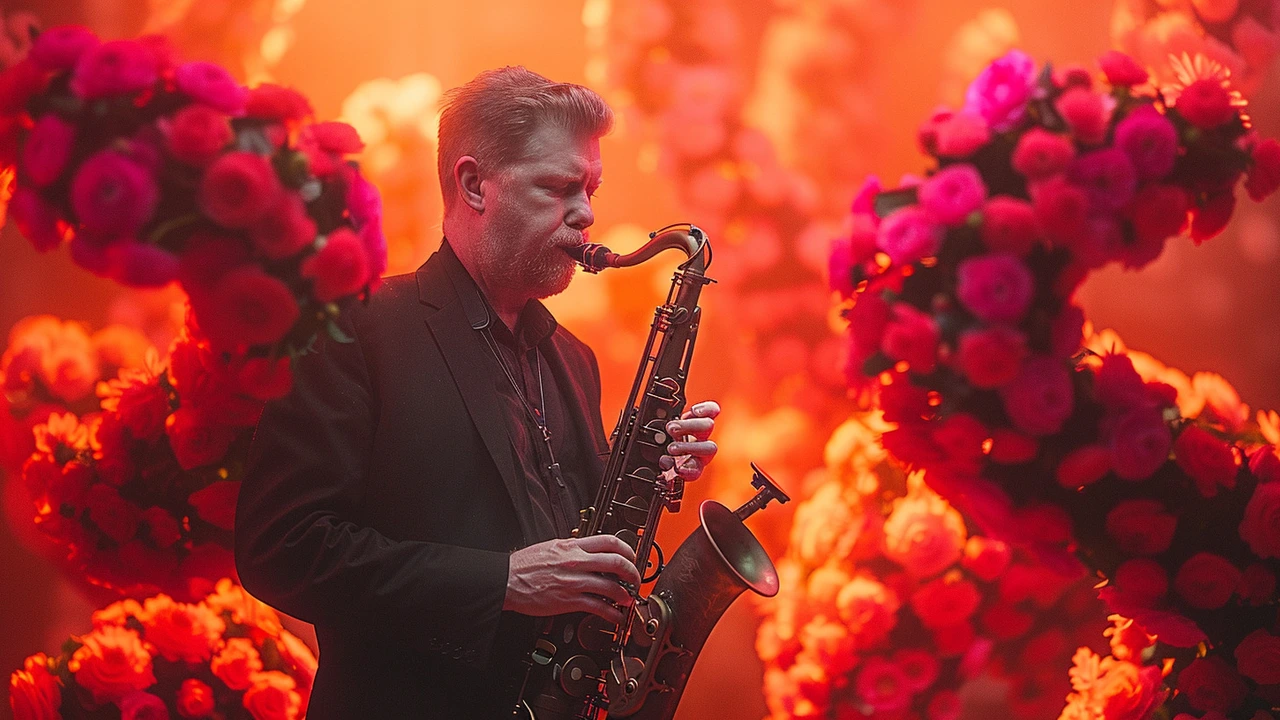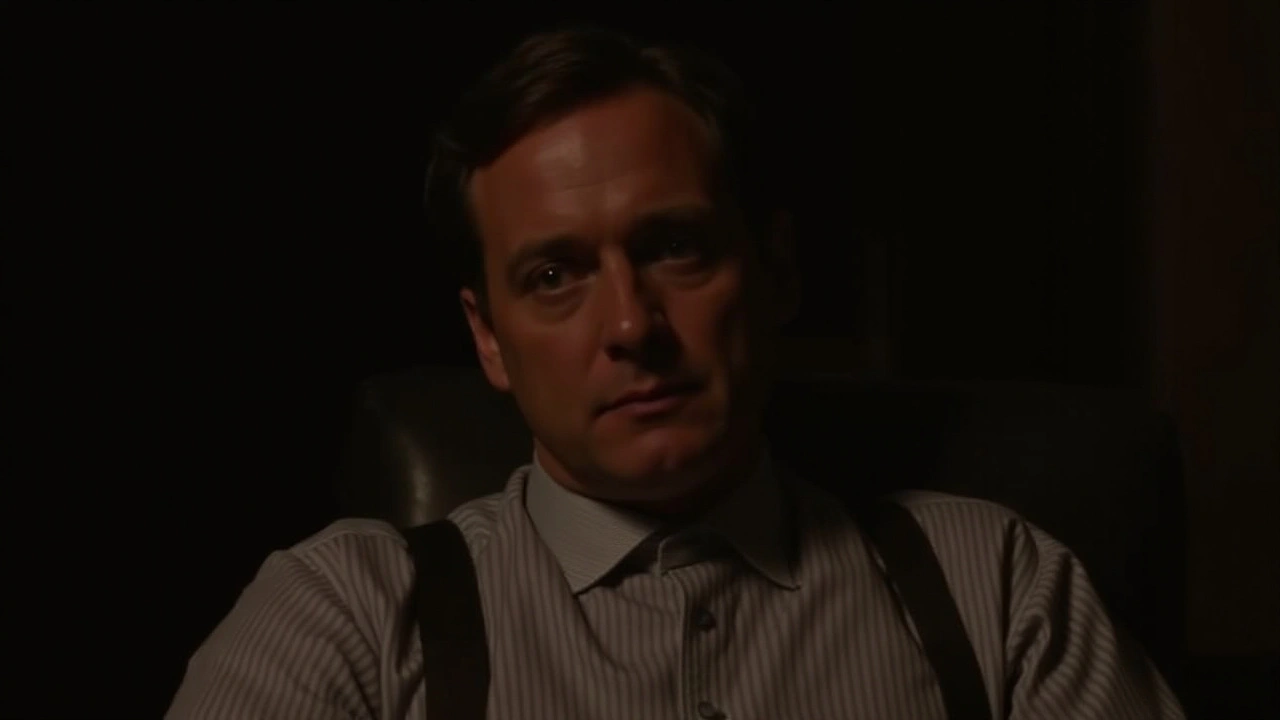
The Life and Legacy of David Sanborn
On a somber note, the music industry bids farewell to one of its most illustrious figures, saxophonist David Sanborn, who has died at the age of 78. Sanborn's journey through music was nothing short of spectacular, marked by numerous highlights and a style that forever changed the soundscape of jazz and popular music. Born in Tampa, Florida, Sanborn was drawn to the saxophone at a tender age, finding solace and expression in its resonant tones while recovering from a bout of polio. This early passion set the stage for what would become a revolutionary career.
Sanborn's foray into professional music began in the turbulent 1960s. He joined The Paul Butterfield Blues Band, and his performance at the iconic Woodstock festival put him on the musical map. His alto saxophone, capable of delivering both sweet melodies and tart harmonics, became his signature. It was this distinctive sound that would later define the smooth jazz genre, making Sanborn a household name.
Throughout his career, Sanborn's ability to blend genres opened up opportunities to work with some of the greatest musical talents of the time. His memorable collaborations extended from rock legend David Bowie to the melodious Stevie Wonder. Sanborn's saxophone added a layer of soul to Bowie's 'Young Americans' and brought a rhythmic complexity to Wonder's 'Tuesday Heartbreak.' But it wasn't just rock and soul that felt the impact of Sanborn's sax; his instrumental prowess was a highlight in countless jazz and R&B sessions, underscoring his versatility as a musician.
In the 1980s, Sanborn's career hit a high note as he received four consecutive Grammy awards, a testament to his mastery and innovation in music. This period was particularly fruitful, as Sanborn not only continued to work with other artists but also advanced his solo career. Albums like 'Hideaway' and 'Straight to the Heart' are considered classics in the jazz canon, showcasing his robust playing style and emotional depth.
Apart from his recording successes, Sanborn made significant contributions to television. He spent a brief time in the 1980s as part of the Saturday Night Live band and later co-hosted 'Night Music,' a show that mirrored his eclectic musical tastes by featuring a range of performances from jazz to classical to avant-garde. His ease in front of the camera and his affable nature helped demystify jazz for many viewers, further cementing his role in the broader music industry.
Despite his many accolades and his status in the music world, Sanborn remained humble. He consistently paid homage to the giants of jazz who paved the way for his experiments and successes. In interviews, he often spoke of the delicate balance between innovation and tradition, a nuanced understanding that defined his approach to music. Even as he battled prostate cancer, a diagnosis he received in 2018, Sanborn's dedication to his art never wavered.
The Impact on Music and Legacy
David Sanborn's death marks the end of an era but also solidifies his legacy as one of the most influential saxophonists in modern music. His approach to jazz, characterized by a fusion of sweet and tart sounds, his collaborations across multiple musical genres, and his contributions to television have left an indelible mark on the music world. Sanborn was not just a musician; he was a pioneer who transcended conventional boundaries, blending the soul of R&B with the complexity of jazz rhythms.
As tributes pour in from all corners of the music industry, it is clear that David Sanborn's influence will continue to resonate. From inspiring younger generations of saxophonists to his timeless recordings, Sanborn's legacy will undoubtedly endure in the annals of music history. His music continues to inspire and captivate, transcending boundaries and touching hearts, ensuring that his contribution to music will be celebrated for years to come.






Neha Godambe
May 14, 2024 AT 19:58David Sanborn's passing marks a profound loss for the music world; his saxophone voice reshaped smooth jazz and beyond. His relentless pursuit of sonic innovation set a benchmark for aspiring musicians worldwide. Let us honour his legacy by immersing ourselves in his discography and championing the artistry he championed. The community must continue to celebrate his contributions without hesitation.
rupesh kantaria
May 18, 2024 AT 07:18In observing the trajectory of Mr. Sanborn's oeuvre, one discerns a remarkable synthesis of technical virtuosity and emotive resonance; his contributions to the genre are, without doubt, exemplary. The chronology of his collaborations evidences a strategic navigation of both popular and avant-garde milieus, thereby enriching the auditory tapestry of contemporary music.
Nathan Tuon
May 21, 2024 AT 18:38What an inspiring journey he had – a true testament to perseverance and passion.
shivam Agarwal
May 25, 2024 AT 05:58Indeed, Sanborn's influence transcended borders, echoing in countless cultural contexts. His ability to fuse melodic sweetness with a gritty edge resonated with audiences from New York to Nairobi. By bridging diverse musical traditions, he fostered a global dialogue that enriched the very fabric of modern jazz. It is fitting that we, as listeners and performers, keep his spirit alive through continual exploration.
MD Imran Ansari
May 28, 2024 AT 17:18Sanborn's technical mastery is a masterclass in tonecraft – his phrasing, timbre, and dynamics are unparalleled. 🎷💥 Dive into his catalog and you’ll hear an orchestra of emotions packed into each note.
walaal sanjay
June 1, 2024 AT 04:38Let us begin by stating the obvious: David Sanborn was, without a doubt, the apex of saxophone virtuosity, a fact that is indisputable, unassailable, and utterly undeniable. His tonal palette possessed an unparalleled richness, a depth that no other contemporary could hope to approximate, and it is this singularity that set him apart from the hoi polloi. One must consider the hundreds of recordings he graced; each track became an exhibit of his relentless pursuit of perfection, a pursuit that left an indelible mark upon the annals of music history. Moreover, his collaborations with titans such as Bowie and Wonder were not merely guest appearances, but rather symbiotic unions that elevated every composition to ecclesiastical heights. The sheer number of Grammys he garnered, four in a row, underscores a career defined by consistent excellence, unblemished by mediocrity. Critics who dare to minimize his contributions are, frankly, exhibiting an intellectual bankruptcy that borders on the absurd. He pioneered the “smooth jazz” aesthetic, an innovation that sparked both admiration and, yes, occasional critique – yet the latter only serves to highlight the boundaries he shattered. His tenure on Saturday Night Live, though brief, showcased his adaptability, proving that his artistry transcended studio confines and thrived in live, spontaneous environments. The emotional breadth of albums like “Hideaway” and “Straight to the Heart” is a testament to his capacity to weave narratives without uttering a single word, a craft few have mastered. Furthermore, his relentless humility in the face of such acclaim offers a moral exemplar for aspiring musicians; he never once allowed ego to eclipse his art. In battling prostate cancer whilst continuing to perform, he displayed a fortitude that many would deem heroic, a testament to his devotion to the saxophone and to his audience. The legacy he leaves is not merely a collection of recordings, but an educational blueprint for future generations of saxophonists. Parents, educators, and students alike will reference his techniques in curricula worldwide, ensuring his influence persists indefinitely. To conclude, David Sanborn’s life work stands as a towering pillar of artistic achievement, a benchmark against which all future saxophonists will be measured, and any attempt to downplay his stature is tantamount to denying the very foundations of modern jazz.
Umesh Nair
June 4, 2024 AT 15:58i gotta say, while everyone pats the sax god on the back, we cant ignore the fact that some of his stuff feels a bit overproduced, ya know? maybe less glitter, more grit woulda kept it real. just my two cents, but don't take it as hate.
kishore varma
June 8, 2024 AT 03:18Chill vibes, folks – Sanborn’s tracks are perfect for a relaxed Sunday afternoon. 🌞🎶 His mellow tones just melt the stress away.
Kashish Narula
June 11, 2024 AT 14:38Absolutely, his music creates a serene atmosphere; it's a gentle reminder of how sound can soothe the soul. However, we should also acknowledge the broader cultural impact beyond the melodies.
smaily PAtel
June 15, 2024 AT 01:58Indeed, the serene atmosphere is undeniable; however, the broader cultural impact extends far beyond the sonic surface, influencing not only listeners but also countless emerging artists across diverse genres, thereby shaping contemporary musical discourse.
Hemanth NM
June 18, 2024 AT 13:18His legacy will echo forever.
rin amr
June 22, 2024 AT 00:38One must appreciate the erudite sophistication embedded within Sanborn's phrasing; his tonal choices reflect a cultivated aesthetic rarely encountered in mainstream productions. Moreover, his willingness to traverse genre boundaries underscores an intellectual curiosity that elevates his oeuvre.
Jai Bhole
June 25, 2024 AT 11:58Patriotic of course, Sanborn's genius symbolizes our cultural supremacy; his saxophone is a beacon of national pride, proving that our artistic heritage outshines every other.
rama cs
June 28, 2024 AT 23:18While the narrative glorifies the individual, we must scrutinize the systemic frameworks that enabled such a career; the jargon of 'legacy' often obscures the commodification inherent in the industry.
Monika Kühn
July 2, 2024 AT 10:38Oh sure, let's all bow down to the sax wizard while ignoring the fact that smooth jazz is just background music for elevators. Real art demands friction, not butter.
Surya Prakash
July 5, 2024 AT 21:58Respectfully, it is essential to uphold moral standards when evaluating artistic contributions, ensuring that admiration does not eclipse ethical considerations.